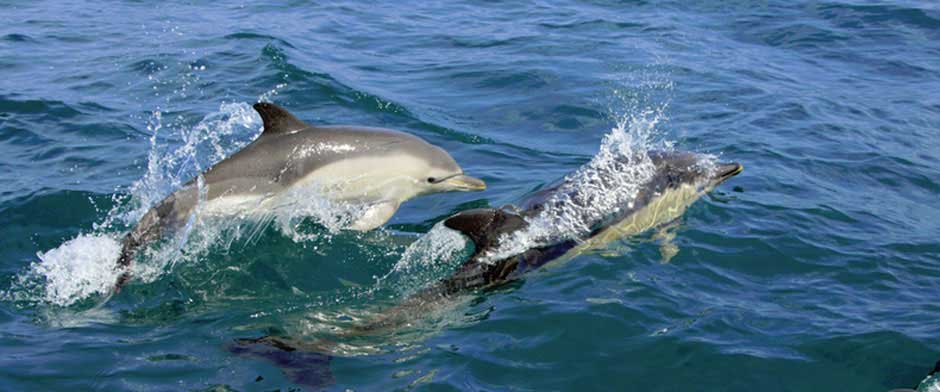
Cardigan Bay is home to one of only two resident groups of Bottlenose Dolphins in the UK.
The stunning coastline of Cardigan Bay has the largest population of dolphins in Europe and, on National Dolphin Day, is the best place to spot one.
It boasts more than 60 miles (96km) of coast, 30 beaches and a bottle nosed dolphin population of more than 250.
Video of Dolphins in Cardigan Bay
All About Dolphins
Bottlenose Dolphins grow to around 4 meters in length and can weigh more than 400 kilos.
They live for more than 40 years and produce only one calf in three years.
They cruise at around 10km / hour with a maximum speed of 40km / hour.
Trips depart from New Quay on the west coast of Wales.
Bottlenose dolphins are present all year round, along with the Harbour porpoise who is also a frequent visitor to the area. The coastline between New Quay and Cardigan has always been noted for its marine wildlife which also includes grey seals. During the summer months sun fish are also regular visitors.
It is possible to spot dolphins almost anywhere as you explore the beautiful coast of Cardigan Bay. The best places to observe them are:
- Cardigan Island Farm Park
- National Trust Beach at Mwnt
- Ynys Lochtyn at Llangrannog
- New Quay.
It’s now possible to watch the dolphins in New Quay from the comfort of your home using the webcam set up by the Cardigan Bay Wildlife Centre.
Dolphin Spotting Boat Trips are available from Winston Evans Boat trips at New Quay beach.
Remember dolphins are wild free ranging animals so there is no guarantee of a sighting. May to November are the best months. The best times being early morning, evening and immediately after high tide.
The New Quay Dolphin Monitoring Group have been observing dolphins in order to learn how they use their remarkable sound faculties as a sensory tool, a hunting weapon and a means of communication.
Please download a copy of the Ceredigion Marine Code [PDF] which details how to protect Cardigan Bay dolphins, seals and porpoises.
From the observations made in New Quay Bay, the bottlenose dolphin population appears to co-exist with groups of Atlantic grey seals and harbour porpoises using the same habitat.
